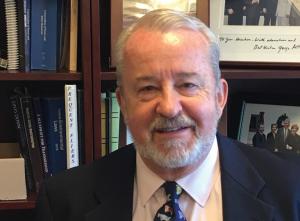By Former FERC Chair Jim Hoecker

The last and only time that FERC added four commissioners at approximately the same time was 1993. That was when my colleagues Bailey, Massey, and Santa and I were confirmed to join Chair Moler at the Commission. The arrival of that "Dream Team" - thank you, Senator Johnston! - presaged a decade of sweeping changes in federal electricity policy.
Following Congress' modest suggestions in the Energy Policy Act of 1992, our pro-market pro-transmission reforms were a foregone conclusion (difficult as they were). We sought to replicate the open access and market innovations of Order No. 636 for interstate gas pipelines, build on growing ideas about regional power markets and the old power pools, and recognize the competition legacy of PURPA. Order Nos. 888, 2000 and (later) 890 and the interconnection rules remain keystones.
But today, unlike 1993, there is no fresh policy guidance from Congress or an Order No. 636 to use as a benchmark. So, readers may legitimately ask, what may we expect from the four fresh faces due to take their places at FERC, probably before year's end?
Readers of Public Utilities Fortnightly can rest assured that our new federal regulators will be fully employed. The Commission's rates, projects, and policy making outboxes are plenty full. Acting Chairman LaFleur has used the hiatus in agency business to fill the record with comments and analyses on several important electricity and natural gas issues. And, of course, there's always the backlog.
New Commissioners might well ask: what now? This is ground on which a "former" anything, much less a former FERC Chairman, should fear to tread. But, here are some pointed suggestions anyway.
I would argue that attending to the state of the nation's electric transmission infrastructure must be a top priority for two obvious reasons. The President and Congress are clearly looking for action on critical infrastructure, and there's none more critical and important to building a dynamic economy over the next quarter century than the grid.
Moreover, a succession of Commissions has driven a pro-transmission agenda for two decades now, but not nearly to completion. While it is worthwhile debating what has and has not been achieved, this is a time to look forward...
I am proud that the Dream Team voted consistently for dramatic regulatory innovations. But neither the structural changes occurring in the industry nor the implications of a more highly integrated, digitized grid infrastructure were fully appreciated or even foreseeable. Even by 2005, competitively-priced renewable resources had not yet exerted meaningful pressure on transmission or other public policies.
Therefore, in retrospect, Congress' efforts to promote backstop siting, authorize FERC to incentivize transmission, and encourage interstate compacts and coordination of federal permitting of transmission facilities were destined to be stillborn, despite considerable "sturm und drang" and bureaucratic effort.
FERC's struggle to reconcile transmission incentive rates with the just and reasonable standard tended to diminish FERC's interest in Congress' directive and thus the effectiveness of those incentives. Not surprisingly, the robust investment in transmission projects over the past decade, largely comprised of incremental additions and upgrades justified by reliability concerns, has now begun to flag...
That's where this policy debate is headed. But it's not clear who will pick up the baton. For now, with infrastructure back on the national agenda and FERC's pro-transmission legacy at stake, there are two main courses on FERC's plate.
First, by sending Opinion No. 531 back to the Commission for a re-justification, the D.C. Circuit Court of Appeals has presented FERC with a golden opportunity. It can take the long view of the need for stable and adequate transmission equity returns - returns that are predictable, not so subject to the repetitive attacks, and far less volatile than those we have witnessed in the past five years...
Uncertainty dogs investment and increases costs, serving consumers poorly. It is sown by serial return on equity complaints. It is magnified by methodological switches like FERC's change to the two-step growth rates at a time when interest and bond rates were at historical lows, depressing the resulting returns. Doubt about the validity of IBES as the sole source of data for short-term growth rates persist, due to its lack of standardization...
The second infrastructure priority is wrapped up in Order No. 1000. Its deferential approach, and its failure to take seriously the need for interregional transmission has slowed or halted movement toward a more integrated grid. Six years after its adoption, Order No. 1000 has done little or nothing to advance interregional coordination, including cost allocation...
In my view, Order No. 1000 was a woefully inadequate attempt to address interregional planning. However, we can certainly learn from its unusual trajectory. Now it's best to stick a fork in it. It's done. Let's move on to fix what's wrong, supply what's missing, and set as a goal a genuinely integrated grid that will stand up to the demands that dynamic future developments will place on it...
The now twice-per-month magazine for commentary, opinion and debate on utility regulation and policy, Public Utilities Fortnightly. In PUF, impact the debate frequently.
Steve Mitnick, Editor-in-Chief, Public Utilities Fortnightly
E-mail me: mitnick@fortnightly.com


